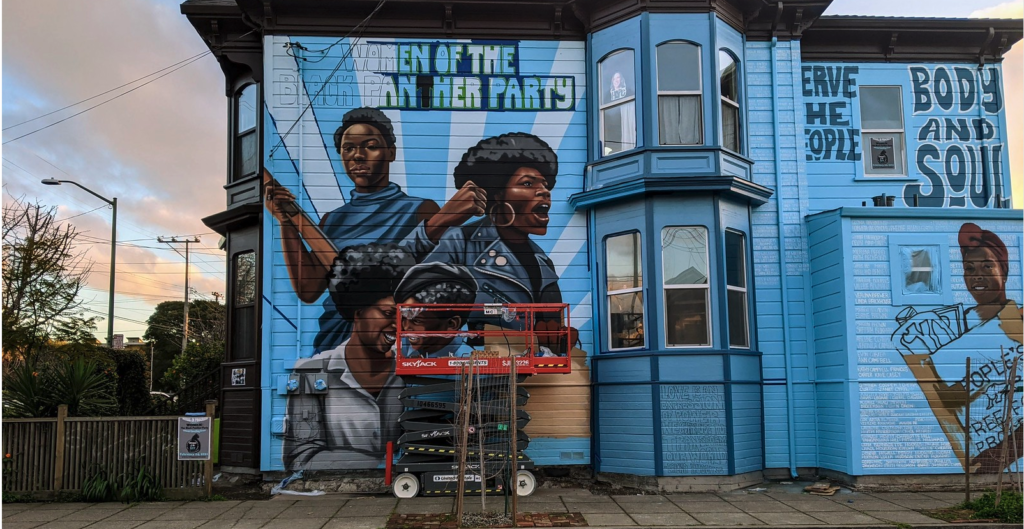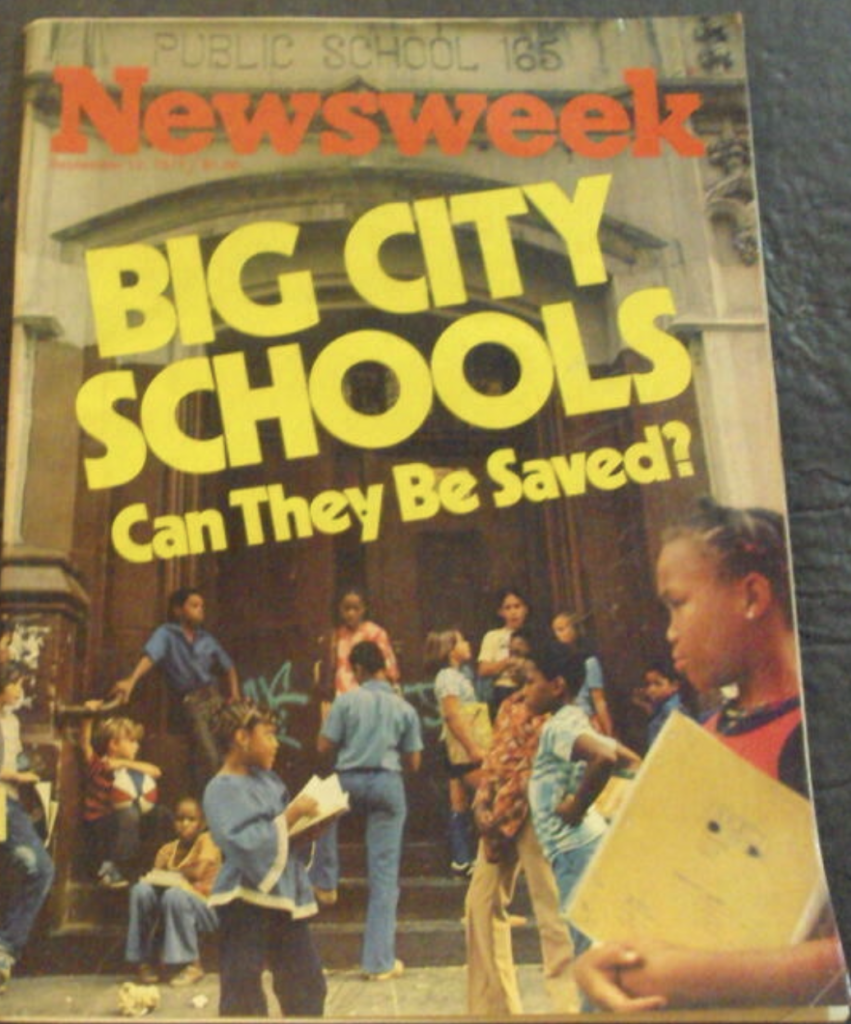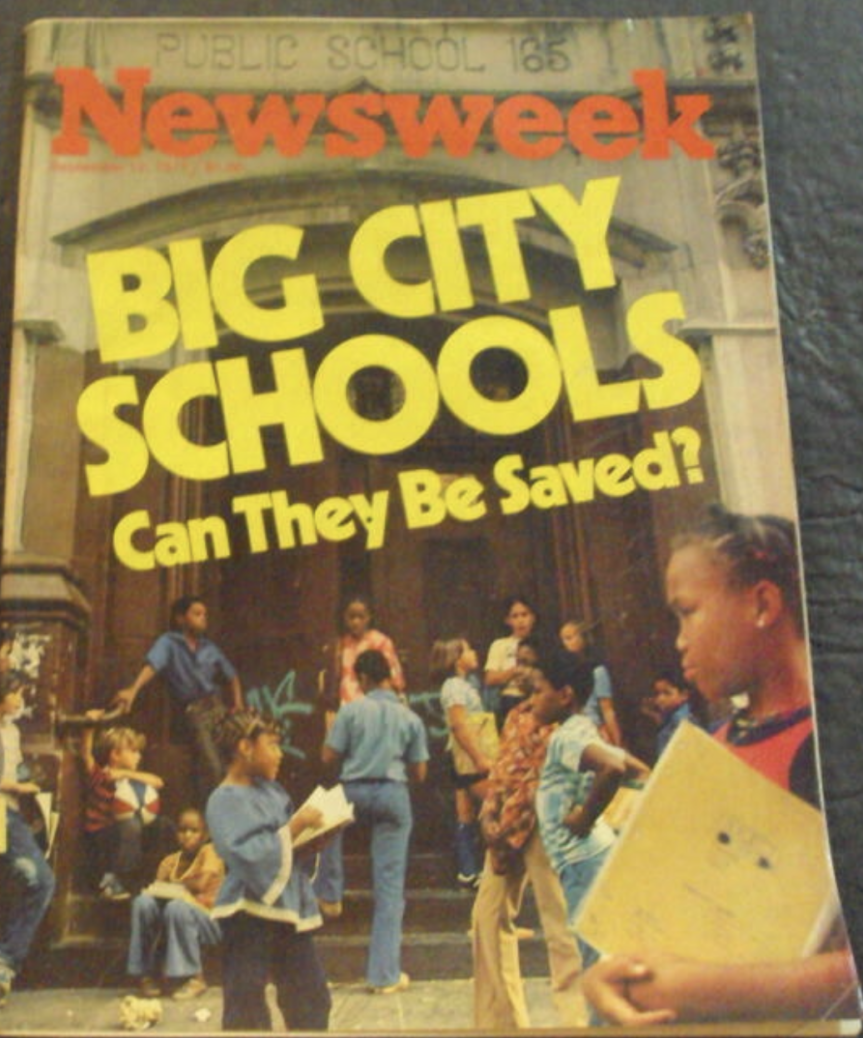By Sarah Ratliff

Recently, I learned about Oakland’s plans to close or merge 11 public schools, which immediately consumed me with sadness because while I don’t live in Oakland, it’s one of my favorite cities. With its long history of activism, I came to see Oakland as a Mecca for social change.
I grew up in New York City in the 1970s. My parents were an interracial couple who both worked hard to ensure that my brothers and I were fluid in our Black history to counter what we learned in the public schools, which upheld white supremacy. In my 55 years, not much has changed with respect to Critical Race Theory.
My parents were committed to providing cultural and historical balance, and as a result, helped me learn about Oakland’s critical role in the Civil Rights Movement. The 1960s ushered in a wave of social justice movements and protests, with Oakland often at the center. Grassroots organizers, such as the Intertribal Friendship House and the Unity Council fought for fair housing, racially integrated schools, and equal opportunities in employment. Regional and national organizations like these helped provide some of the framework for Affirmative Action.
Oakland is also where Bobby Seale and Huey Newton founded the Black Panther Party for Self Defense (1966) to address police brutality of African Americans. Although rarely credited, the Black Panthers were the first to provide breakfast for low-income students, an initiative later adopted by many public schools throughout the United States.
In 1996, I met my husband. Soon after, we settled in Southern California. During the 10 years we lived there, we made frequent trips to the Bay Area. Being both practical and adventurous, we opted for a small wedding in San Francisco rather than have a large and expensive wedding, which was followed by a week spent exploring the Bay Area. Huge fans of Bruce Lee, we saw where in Oakland he opened his second Jeet Kune Do school. We visited friends and relatives and took a walking tour of Oakland. Needless to say, I fell in love with the town.
Oakland’s School Closures: Looking to Puerto Rico as an Example of Its Potential Impact
As I read more about Oakland’s school closures, I am reminded of Puerto Rico. Although there are 6.5 million Puerto Ricans, more than half of them live on the U.S. mainland. Extremely high cost of living combined with low salaries is what’s at the heart of the dramatic Puerto Rican diaspora (the migration of people from their homeland, particularly in large numbers). Imagine paying $350 a month for utilities, $500 or more for rent, 15 to 50 percent more for food, $12,000 more for a new car than it would cost in the states, all on a salary that’s between a third and half of what someone in the same job in the states would make.
As a result of the significant diaspora, in 2007, Puerto Rico’s Department of Education started shuttering schools. In total, 673 public schools have closed since then, requiring children to be bussed up to an hour away to the nearest open school. There are very few local schools left—except for those living in the town versus in the countryside. No good comes from closing schools and putting less money into the ones that are left.
Closing 11 of Oakland’s schools, which will mostly affect Black and/or Latino students, is a mistake with long-term consequences. The argument favoring school closures is that the city will save money and therefore be able to provide better learning opportunities. Historically this hasn’t been the case.
Kids are often bussed to equally low-performing schools in unfamiliar neighborhoods, often without the benefit of the familiarity of friends from their old school. In these scenarios, grades can slip, bullying can increase, and kids can sometimes develop a disinterest in activities they once found pleasure in.
Long-term consequences of school closures can include not graduating from high school, which can lead to fewer professional opportunities and having to accept lower-paying jobs with less social mobility and mental health struggles.
Oakland has a long history of activism and diversity. However, much of both have been eroded by the shift in demographics with the start of gentrification in the early 1990s. For the middle- and upper-middle class, which is mostly white professionals tired of paying San Francisco prices, neighboring Oakland seemed like a perfect alternative. As is always the case, gentrification comes with a huge price tag for communities of color who get displaced, and are forced to look elsewhere (in the same state, or sometimes outside the state) in search of more affordable housing.
Part of what made me fall in love with Oakland is that it reminded me of a much smaller, more accessible New York City–but not the New York of today. When I was growing up, New York City epitomized the expression “melting pot.” People from every race, religion and socioeconomic class worked together to give their neighborhoods character, and help one another survive and thrive. People thought nothing of asking for help from a neighbor–regardless of any external differences between them. When something happened to anyone in the neighborhood, it happened to all of us and we came together to help. There wasn’t a feeling of us vs. them, wealthy vs. working class or Black vs. white.
The Oakland I read about while growing up was the same. Maybe it was the time period: the 60s and 70s were very different from today. People strived for a more harmonious and equitable existence as opposed to what I feel is the case today: greed and lack of empathy combined with the belief that one class and one race are somehow better and more deserving than others.
It literally pains me to see what’s happening to Oakland because the same thing happened to the New York City of my childhood. I remember when schools in low-income and middle class neighborhoods started deteriorating–both academically and structurally.
Newsweek ran a story in 1977 called “Big City Public Schools: Can They Be Saved?” Although the title neglected to mention which big city public schools, the article highlighted schools in neighborhoods where many Black and Brown children lived that were deemed underperforming. Among the schools mentioned were a few in my New York City, so I speak from experience. History is repeating itself again with the shutting and merging of schools —is a critical first step toward gentrification.

Can you pick me out of this photo?
Prior to gentrification, what made the city cool was diversity in all its forms. Once gentrification came in (1960s, occurring just as the Civil Rights Movement was in full swing), it began losing its flavor, and sadly I see the same thing happening in Oakland and Puerto Rico. The closing of schools is a first step. Eventually the best and brightest will leave Oakland–leaving it to the wealthy–as they did in New York City and are continuing to do in Puerto Rico.
If You Were in Charge, What Would You Do?
More often than not, those in charge of making decisions that impact one group are rarely affected themselves. As such, it’s seemingly easy to shut schools that serve communities of color and low-income families.
I have to also ask myself, what happened to the No Child Left Behind Act of 2001? The intent of the act was to avoid school closures and put more resources into lower-performing schools, making them competitive with schools in wealthier neighborhoods. Was implementing the act at odds with gentrification, I wonder?
Sarah Ratliff is a corporate America escapee turned eco-organic farmer, writer, published book author and activist. She is the co-author of Being Biracial: Where Our Secret Worlds Collide, an anthology of essays exploring mixed-race identity that has attracted 50+ 5-star reviews on Amazon. Her main topics of interest are Puerto Rico, cannabis, health, race and gender, addiction, politics, STEM, travel and the environment. Her bylines have appeared in Big Buds Magazine, LA Weekly, the Village Voice, The Fix, Civil Eats, CBD-Intel, LABS, High Times, Civilized, Merry Jane, Mother Earth News, Blavity, AAA Northeast and Trends.

